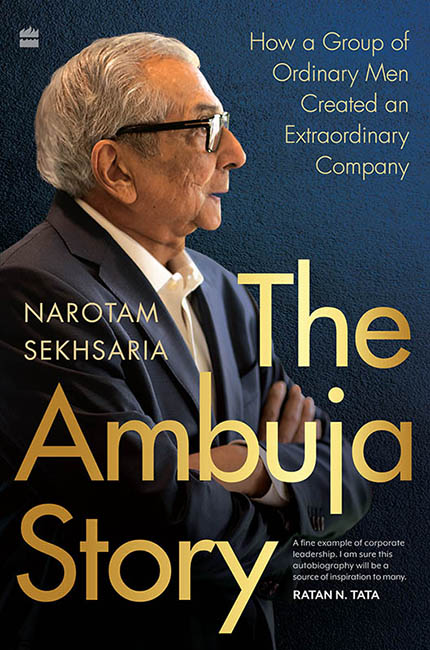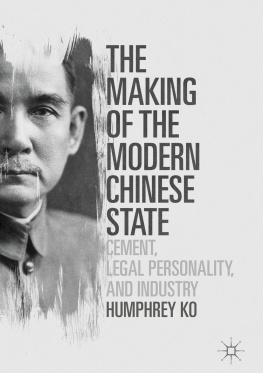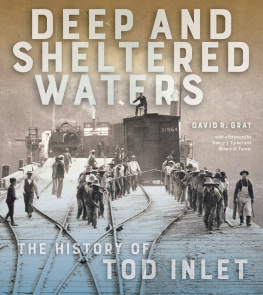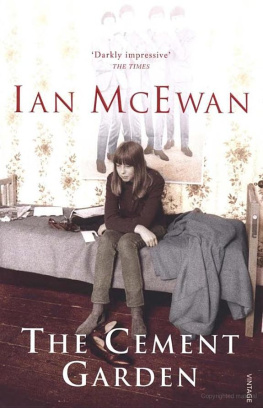Table of Contents


For
my wife Nalini,
son Pulkit, and daughter Padmini
whose unconditional love energised me every day
Contents
O n a sweltering day in the summer of June 1982, Suresh Neotia and I flew to Lucknow to explore the possibility of setting up a cement plant in Uttar Pradesh. Suresh, who had arrived from Calcutta, was a relative and a mentor to me. We had come to Lucknow to meet Mr Narayan Dutt Tiwari, the Union Industry Minister, to submit the initial proposal for the plant, and to gauge the response. Mr Tiwari had been the Chief Minister of Uttar Pradesh till a few years ago and retained considerable clout in the state capital.
We were waiting in the lobby of the iconic Clarks Hotel on our way to the meeting when I saw a distinguished, tall, and fair gentleman walk in with a retinue of people. I recognized him immediately. It was Mr N.N. Pai, the chairman and managing director of Industrial Development Bank of India (IDBI), the countrys premier bank for development finance in those days. I had known him well for a few years. He saw me and stopped. Narotam, what are you doing here in Lucknow? he asked. I told him about our mission. He looked slightly amused and indulgently told me, You are wasting your time. If you are serious about investing, you should consider Gujarat.I was taken aback by his bluntness. Sir, Suresh knows Mr Tiwari well, and we hope to get his support, I told him. He wasnt convinced. He reiterated that if we were serious about setting up a cement plant, we should consider Gujarat. He told us that he was flying to Ahmedabad that evening, and if we were to go with him, he would introduce us to everyone who mattered. Even if you dont know anyone in Gujarat, they will welcome you like a son-in-law, he said.
Mr Pai then walked away to his meeting. Suresh and I were puzzled by his remark and suggestion. We had come to UP on the advice of Dr M.P. Jain, the managing director of Andhra Cements, one of South Indias best-known cement companies in those days. I was then a cotton trader, and Suresh a distributor of petroleum products based out of Calcutta. We wanted to get into cement manufacturing, and Dr Jain, who was among the most respected professionals in the industry, was expected to join us as a partner.
He had told us about the availability of high-quality limestone mines in the Dehradun valley region of UP and how no one had exploited it as yet. The other reason he plumped for UP was that the state, despite its size, had only one small cement plant. Outside manufacturers met the rest of its cement demand.
We trusted Dr Jains judgement on UP. Nevertheless, now that Mr Pai, who was among the most powerful bankers in the country, had proposed Gujarat, we decided that I should go with him to Ahmedabad out of courtesy and respect. The IDBI would be critical to our financing requirements when we reached that stage. I had never been to Ahmedabad; it would be a good adventure. I liked meeting new people and getting to know them.
However, at that moment, we were focused on our meeting with Mr Tiwari and his team. Unlike Mr Pai, we were still hopeful. Uttar Pradesh was one of Indias most underdeveloped states, and we were proposing a significant new industrial investment there. Even if not the red carpet, we were at least hoping for a hearty and hospitable reception from Mr Tiwari. Besides, Suresh had known him for a long time.
When we reached Mr Tiwaris office, the reception was far from what we had expected. We were made to wait for hours as there was a queue of people waiting to see him. When we were finally ushered into his presence, all he did was shake our hands, give a polite smile, and ask us to handover our proposal to a secretary standing nearby. That was it. No conversation, no questions. The meeting was over in about two minutes.
What we saw was a live example of why UP had failed to attract industrial investment even in those days.
To say that we were disappointed would be an understatement. To my mind, our dream of setting up a cement plant in UP ended there. Seeing Mr Tiwaris indifferent response, I had no expectations from the state government. Disheartened and dejected, we left straight for the airport. Suresh was taking a flight back to Calcutta, while I had to meet Mr Pai and travel on his chartered plane to Ahmedabad.
I had no major expectations from this trip to the Gujarat capital. I saw it only as a minor detour on my way back to Bombay. I was going only because Mr Pai had invited me. We had a pleasant conversation about my cement ambition on the flight, and, as always, Mr Pai was very encouraging. It was dusk when we landed in Ahmedabad. As the small plane taxied to a stop, I could see a few people waiting on the tarmac. Those were the days when people could walk to the aircraft to receive their guests.
Mr Pai told me that Mr H.K. Khan, the chairman of Gujarat Industrial Investment Corporation (GIIC), had personally come to the airport to greet us. When we walked down the plane ladder, Mr Khan offered a bouquet to Mr Pai, and he, in turn, introduced me, saying, This is Mr Sekhsaria from Bombay. He wants to set up a cement plant in UP. I am trying to convince him to make this investment in Gujarat.Mr Khan accompanied us in the car as we drove to Ahmedabads Cama Hotel, where we were staying. As the chairman of GIIC, Mr Khan was the principal government bureaucrat in charge of the industrial development of the state. He thanked Mr Pai profusely for bringing me to Gujarat. Mr Pai said that he was scheduled to meet Chief Minister Mr Madhav Singh Solanki at 10 a.m. the next day and that he would inform him about my presence in Ahmedabad and my desire to set up a cement plant.
At the Cama Hotel, we decided to have a cup of tea with Mr Khan before retiring to our respective rooms. Khan, how will you make the cement plant possible for Mr Sekhsaria? Mr Pai asked him as we waited at the coffee shop. Sir, you need not worry. Tomorrow after you meet the chief minister, I will make sure that his office issues a press statement saying Mr Pai has brought Mr Sekhsaria to Gujarat to set up a cement plant, and we welcome the possibility of this investment, Mr Khan said. Once this announcement is made, Mr Sekhsaria will come to my office at GIIC, and we will work out a plan of action. It was only an hour after we landed in Ahmedabad, but the super-efficient Gujarat government bureaucracy was already moving quickly.
The next day, as planned, Mr Pai met the chief minister at 10 a.m., and by noon a press statement was issued by the chief ministers office saying precisely what Mr Khan had told us. It felt like a regular drill that had been perfected by the Gujarat government officials. And as promised, Mr Khans secretary called to say that he was expecting me at his office at 4 p.m. It all seemed to be going too fast for me. I had not had the time to think about this move to Gujarat nor consult Suresh. It felt as if between Mr Pai and Mr Khan, the decision had been made for us.
Mr Khan was warm and welcoming. He gave me the kind of reception I had hoped for from Mr Tiwaris office. Mr Khan ushered me into his cabin and made me comfortable by asking everyone else to leave. He offered me a cup of tea, and we made some small talk. It was almost as if he was meeting a long-lost friend. I spent half an hour with him. He assured me that it was his job to support and guide young people like me, who were keen on investing in Gujarat, even if they had no prior knowledge or experience. He said he would put his officials on the job, and they would prepare a note on the way forward. It would be sent to me within a few weeks.












